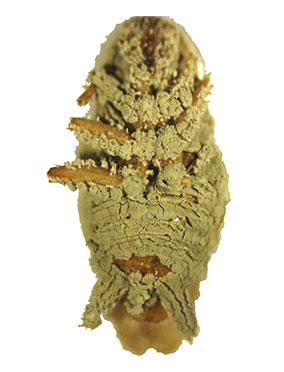
The genome sequence and gene predictions of Metarhizium anisopliae were not determined by the JGI, but were downloaded from NCBI and have been published (Qiang Gao et al., 2010). Please note that this copy of the genome is not maintained by the author and is therefore not automatically updated.
Metarhizium robertsii (formerly classified as Metarhizium anisopliae) is an insect pathogenic fungus that has a broad host range by killing hundreds of insect species. The fungus has been developed and applied as a promising insect biological control agent against different insect pests. The sexual stage of Metarhizium spp. is recognized as Metacordyceps spp. but the fungus is largely clonally reproduced in the field. The haploid of M. robertsii contains a single mating-type locus and the fungus is thereby sexually heterothallic. The fungus infects insects by producing appressoria to penetrate insect cuticles and then colonize insect hemocoels. It has been recently evident that the fungus can also colonize plant roots where it may simultaneously act as a biofertilizer and biopesticide to boost plant growth. The fungus is also a prolific producer of diverse secondary metabolites with activities against insects, fungi, bacteria and cancer cells.
Genome Reference(s)
Gao Q, Jin K, Ying SH, Zhang Y, Xiao G, Shang Y, Duan Z, Hu X, Xie XQ, Zhou G, Peng G, Luo Z, Huang W, Wang B, Fang W, Wang S, Zhong Y, Ma LJ, St Leger RJ, Zhao GP, Pei Y, Feng MG, Xia Y, Wang C
Genome sequencing and comparative transcriptomics of the model entomopathogenic fungi Metarhizium anisopliae and M. acridum.
PLoS Genet. 2011 Jan 6;7(1):e1001264. doi: 10.1371/journal.pgen.1001264
